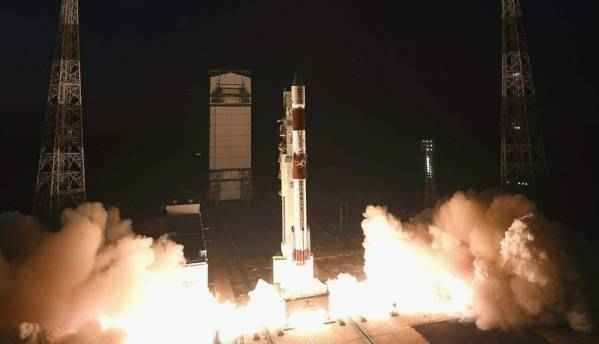ISRO’s reusable Made in India shuttle launches to space and back

The RLV-TD, declared "Mission Accomplished" by ISRO, has been five years in the making.
In the early hours of May 23, the Indian Space Research Organisation (ISRO) successfully launched and accomplished the mission of sending the first-ever space shuttle made in India, to space. The test flight, undertaken by the scale model of the shuttle named Reusable Launch Vehicle – Technology Demonstrator (RLV-TD), was conducted from Sriharikota, Andhra Pradesh at 7am today. About 20 minutes into its flight, ISRO declared “mission accomplished”, marking an important benchmark in two major fields – the world’s quest for affordable space missions with reusable rockets, and India’s own presence in the space race.
The RLV-TD has been five years in the making, involving a team of 600 scientists and a cost of Rs. 95 crores ($14.1 million). The scale model tested today was 6.5 metres long, and weighed about 1.75 tonnes. The final version of the shuttle is expected to be operational by 2030, and will be around 40 metres long, almost six times larger than the one tested today. The RLV-TD was launched on a nine ton rocket engine that was engineered to allow vertical lifting by slow burning procedure. The shuttle flew up to a height of 70,000 metres, and then descended at free fall with initial velocity of Mach 5. The landing occurred on a stretch of sea out in the Bay of Bengal, about 500 kilometres away from its launch site.
The scale model of the RLV-TD was the first winged shuttle that ISRO flew and brought back to land. The test shuttle flown today will not be retrieved, although its data will be used to research and build on the future shuttles that will eventually lead to the final version in 2030. ISRO is also the only space agency currently operating winged spacecrafts. Previously, the United States of America had retired its fleet of winged spacecrafts five years back.
Once operational, ISRO’s RLV will take on the likes of SpaceX’s Falcon 9 and Blue Origin’s New Shepard in an unprecedented race to privatise space and bring down the expense of space missions. The RLV, upon completion, will also be able to carry out manned missions. The reusable space mission race is slowly picking up, with the mercurial Elon Musk-backed SpaceX already successfully landing its Falcon 9 rocket out in the sea, twice. Falcon 9’s latest mission was to deliver the Japanese JCSAT-14 satellite to a Geosynchronous Transfer Orbit, 36,000 kilometres above the Earth’s equator. As it came close to a landing with perilously low fuel levels, most had expected the rocket to crash land. Defying such expectations, the Falcon 9 made a successful landing out in the sea, on a drone barge.
ISRO’s RLV would reach the competition slightly after the first movers, but even Falcon 9 and New Shepard have only completed initial flights, and are reasonably far away from manned missions. The main objective of the reusable space missions is to bring down the cost of space missions in the future, making space missions more viable, economically. So far, the Indian Space Research Organisation has succeeded in maintaining stringent budgets while continuing with space explorations. Most notably, ISRO’s Mars Orbiter Mission (MOM), Mangalyaan) was completed at a cost of Rs. 450 crores ($66.8 million), becoming the least-expensive Mars mission ever undertaken. To put things into perspective here, Manchester United’s failed high profile signing of winger Angel di Maria cost the club $86.7 million.
With ISRO declaring the test demonstration as “mission accomplished”, the space organisation will hope to swiftly progress on the affordable space mission forefront. As of now, and until further data from the test flight is made public, it’s game on for 2030.





